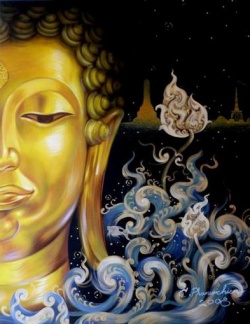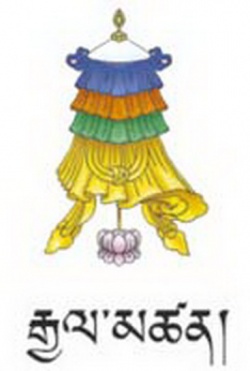Sutrayana – David Chapman
Buddhist Tantra defines itself partly by contrast with “Sutrayana.” “Sutrayana” is supposed to mean “all non-Tantric Buddhism.” My next post will compare the two point-by-point.
The differences are stark; perhaps shocking, even. A crude summary:
Sutrayana says life sucks totally, so you should separate yourself from the world and try to escape into Nirvana—but that is effectively impossible.
Tantra says that life is often fabulous (though often horrible too), so you should enjoy and celebrate it; and enlightenment in this world is realistically feasible.
A boring, but thankfully brief, discussion of terminology
Literally, Sutrayana means “the vehicle (yana) based on the scriptures called ‘sutras’”—or ‘suttas’ in Pali.
The scriptures of Tantric Buddhism are called “tantras”, not sutras.
Frequently, Sutrayana is referred to just as “Sutra” for short, when that would not be confusing.
Buddhist Tantra is more formally referred to as “Tantrayana” (the vehicle of the tantras).
“Vajrayana” means more-or-less the same as “Tantrayana.”
Sutra, Tantra, and actual Buddhisms
“Sutrayana” is a somewhat theoretical construct.
No one would say “yes, I am a Sutrayana Buddhist!” Actual non-Tantric Buddhisms are diverse, and don’t share all the features that “Sutra” has.
Still, “Sutra” is a useful starting point for understanding how other Buddhisms differ from Tantra.
We will see that, as Buddhisms have modernized over the past 150 years, they have grown increasingly similar to Tantra, and less similar to Sutra.
That’s because Tantra is mostly more compatible with modern tastes, and the modern world-view, than Sutra is.
Sutrayana may now even seem unrecognizable as Buddhism, to American Buddhists who are unfamiliar with traditional Asian practice.
Still, all existing non-Tantric Buddhisms retain traces—at least—of Sutrayana’s anti-world, anti-body, anti-self, anti-pleasure, anti-emotion, anti-life orientation.
We should ask now: do we want that? If not, we have an example (Tantra) of an enthusiastically affirmative Buddhist alternative. Can we draw on it in developing future Buddhisms?
Difference does not imply conflict
Throughout their history, Sutra and Tantra have had political conflicts. Proponents of each have denigrated the other. However, the fact that two things are different does not mean that one is better or worse than the other.
Yanas are “vehicles”—tools.
A band saw is not better or worse than a jack plane.
They are both tools that can remove bits of wood, but one or the other may be more useful on a particular job. (I developed this analogy in more depth here.)
Most Tibetan scholars say that Sutra and Tantra have the same ultimate purpose—attaining Buddhahood—but that one or the other is a better vehicle for particular people.
It is also true that no one practices Tantra exclusively.
Everyone who practices Tantra also uses methods of Sutra, and selects whichever is better for particular circumstances.
Theravada and Mahayana are different sects of Buddhism.
But Vajrayana is not a sect. There is no Tantra-only sect; every sect that includes Tantra also includes Sutra.
Some Tibetan teachers and texts say that Sutra and Tantra have different purposes.
I agree. They have different prerequisites, different goals, and their methods are mostly opposite each others’.
On this view, there should be no question of “better” or “worse” at all.
That would be like arguing about whether hammers or saws are better.
You need to choose which to use depending on what materials you have in front of you and what you want to accomplish.
Sometimes it may even be best to think of Sutra and Tantra as totally different religions.
However, they are both recognizably Buddhist.
In fact, you can understand Buddhist Tantra as a necessary fulfillment of the bodhisattva approach to Sutrayana.
I’ll write about that later. Also, I’ll write about the ways that Hindu Tantra is not Buddhist, and why that matters.
I do think Buddhist Tantra may be more useful, more often, for more people in America in 2013 than Sutra—and yet it is far less accessible. I want to help change that.



